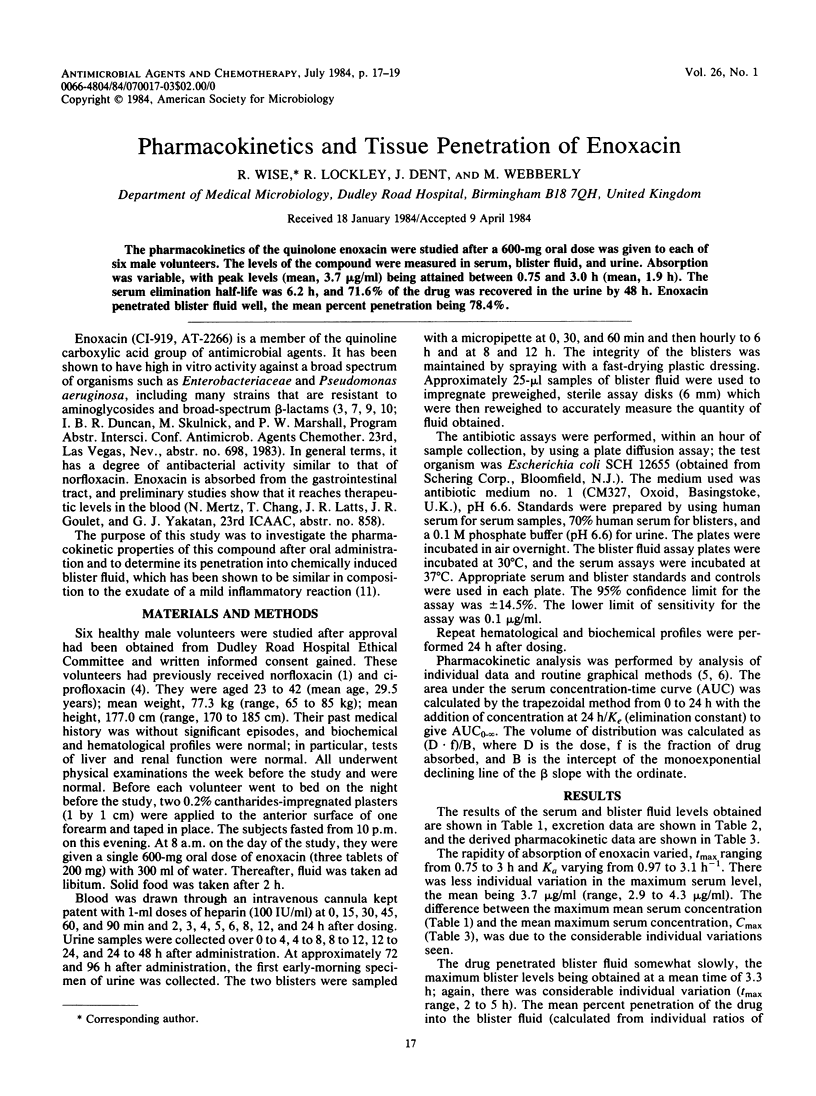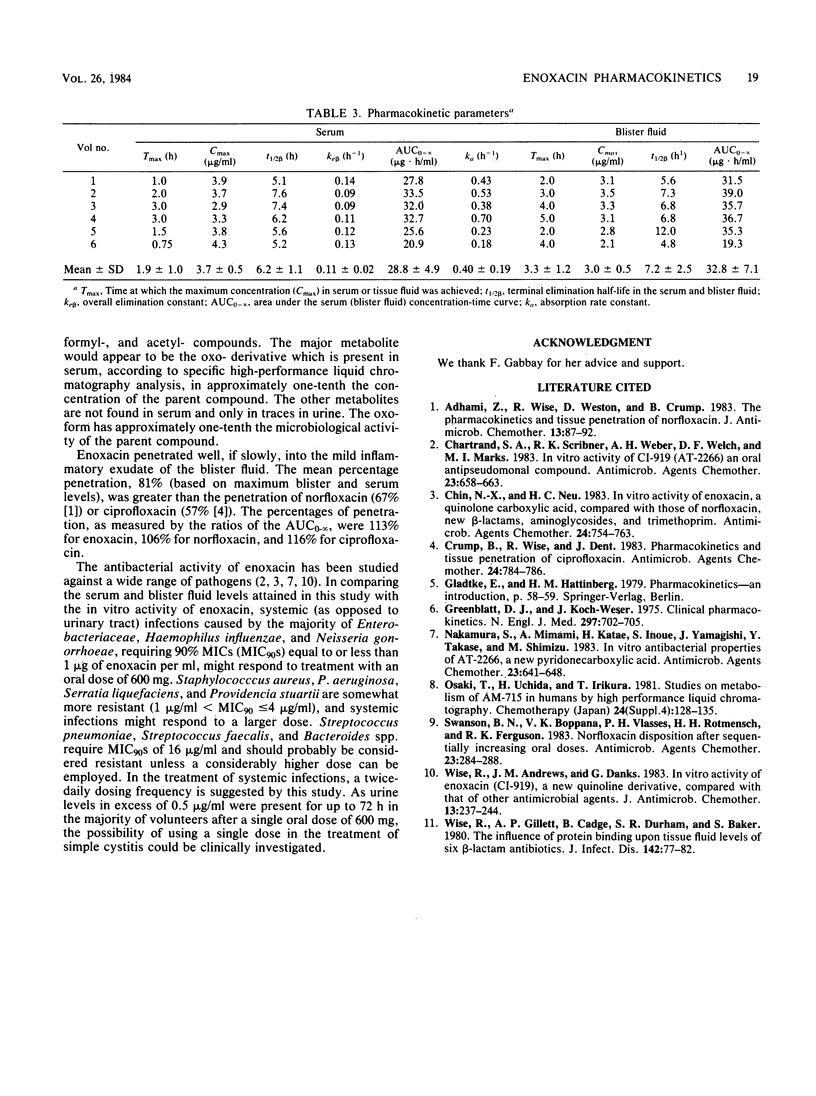Abstract
The pharmacokinetics of the quinolone enoxacin were studied after a 600-mg oral dose was given to each of six male volunteers. The levels of the compound were measured in serum, blister fluid, and urine. Absorption was variable, with peak levels (mean, 3.7 micrograms/ml) being attained between 0.75 and 3.0 h (mean, 1.9 h). The serum elimination half-life was 6.2 h, and 71.6% of the drug was recovered in the urine by 48 h. Enoxacin penetrated blister fluid well, the mean percent penetration being 78.4%.
Full text
PDF


Selected References
These references are in PubMed. This may not be the complete list of references from this article.
- Adhami Z. N., Wise R., Weston D., Crump B. The pharmacokinetics and tissue penetration of norfloxacin. J Antimicrob Chemother. 1984 Jan;13(1):87–92. doi: 10.1093/jac/13.1.87. [DOI] [PubMed] [Google Scholar]
- Chartrand S. A., Scribner R. K., Weber A. H., Welch D. F., Marks M. I. In vitro activity of CI-919 (AT-2266), an oral antipseudomonal compound. Antimicrob Agents Chemother. 1983 May;23(5):658–663. doi: 10.1128/aac.23.5.658. [DOI] [PMC free article] [PubMed] [Google Scholar]
- Chin N. X., Neu H. C. In vitro activity of enoxacin, a quinolone carboxylic acid, compared with those of norfloxacin, new beta-lactams, aminoglycosides, and trimethoprim. Antimicrob Agents Chemother. 1983 Nov;24(5):754–763. doi: 10.1128/aac.24.5.754. [DOI] [PMC free article] [PubMed] [Google Scholar]
- Crump B., Wise R., Dent J. Pharmacokinetics and tissue penetration of ciprofloxacin. Antimicrob Agents Chemother. 1983 Nov;24(5):784–786. doi: 10.1128/aac.24.5.784. [DOI] [PMC free article] [PubMed] [Google Scholar]
- Greenblatt D. J., Kock-Weser J. Drug therapy. Clinical Pharmacokinetics (first of two parts). N Engl J Med. 1975 Oct 2;293(14):702–705. doi: 10.1056/NEJM197510022931406. [DOI] [PubMed] [Google Scholar]
- Nakamura S., Minami A., Katae H., Inoue S., Yamagishi J., Takase Y., Shimizu M. In vitro antibacterial properties of AT-2266, a new pyridonecarboxylic acid. Antimicrob Agents Chemother. 1983 May;23(5):641–648. doi: 10.1128/aac.23.5.641. [DOI] [PMC free article] [PubMed] [Google Scholar]
- Swanson B. N., Boppana V. K., Vlasses P. H., Rotmensch H. H., Ferguson R. K. Norfloxacin disposition after sequentially increasing oral doses. Antimicrob Agents Chemother. 1983 Feb;23(2):284–288. doi: 10.1128/aac.23.2.284. [DOI] [PMC free article] [PubMed] [Google Scholar]
- Wise R., Andrews J. M., Danks G. In-vitro activity of enoxacin (CL-919), a new quinoline derivative, compared with that of other antimicrobial agents. J Antimicrob Chemother. 1984 Mar;13(3):237–244. doi: 10.1093/jac/13.3.237. [DOI] [PubMed] [Google Scholar]
- Wise R., Gillett A. P., Cadge B., Durham S. R., Baker S. The influence of protein binding upon tissue fluid levels of six beta-lactam antibiotics. J Infect Dis. 1980 Jul;142(1):77–82. doi: 10.1093/infdis/142.1.77. [DOI] [PubMed] [Google Scholar]


